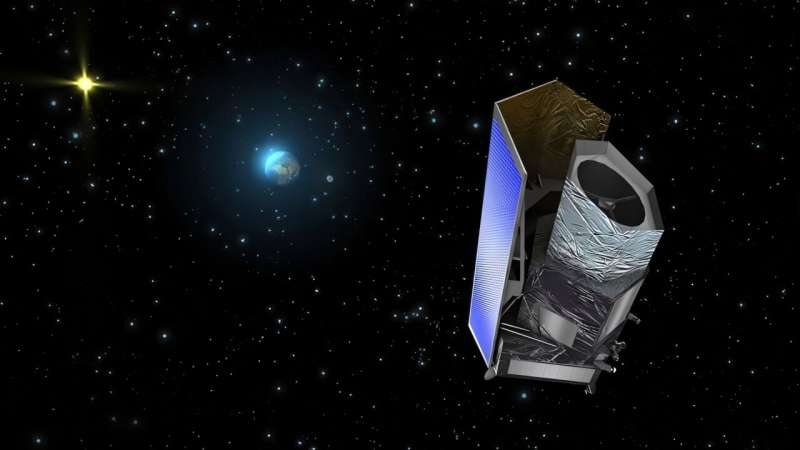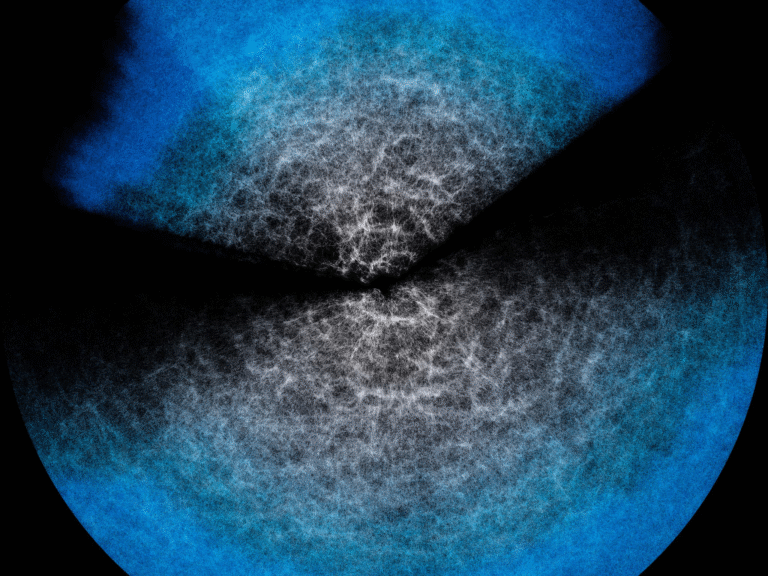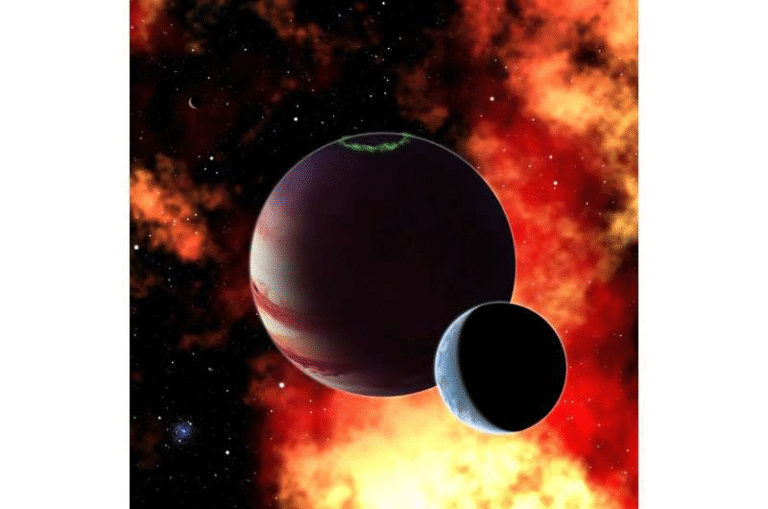Euclid’s Extra Eight Years of Fuel Could Turn It Into the Most Powerful Astrometric Telescope Ever Built

The European Space Agency’s Euclid space telescope, launched to map the dark universe, is on track to finish its six-year primary mission in 2030. But there’s an unexpected twist: Euclid is carrying enough extra fuel to keep operating for about eight additional years. Instead of letting that capability go unused, astronomer Luigi “Rolly” Bedin from the Astronomical Institute of Padua has laid out a detailed and surprisingly practical plan to transform Euclid into a groundbreaking astrometric mission.
His idea is simple, elegant, and potentially revolutionary: redo the entire six-year survey a second time.
Why Repeat the Mission All Over Again?
Euclid’s current mission focuses on observing billions of galaxies to study dark matter, dark energy, and the geometry of the universe. But by repeating the same sky survey six years later, astronomers could measure proper motion — the subtle shift of stars across the sky relative to more distant galaxies.
Proper motion can only be measured accurately when you have two widely separated snapshots of the sky. Six years is an ideal baseline. With Euclid’s sensitivity, repeating the survey would allow astronomers to track how closer objects like stars move against the background of faraway galaxies, something that was not part of Euclid’s original scope.
This idea isn’t just theoretical. It is backed by specific calculations and operational feasibility described in Bedin’s paper, now available on the arXiv preprint server.
But Doesn’t Gaia Already Measure Proper Motion?
If you’re familiar with European space astronomy, your first thought might be the Gaia spacecraft — currently the gold standard for star mapping. Gaia already measures positions, distances, and motion for nearly two billion stars. But it has a major limitation: it can’t see extremely faint objects.
Gaia’s faintness limit is about 20–21 magnitude. Euclid, on the other hand, is built to peer deep into the universe. It can detect objects five to six orders of magnitude fainter than Gaia can. This means Euclid could track the positions and motions of billions of faint stars and galaxies that Gaia simply cannot reach, no matter how long Gaia continues operating.
What’s more, Gaia’s existing datasets are already being used to calibrate Euclid’s imaging systems. That overlap means the two missions together could dramatically improve accuracy. For objects that both telescopes can see, the combination of measurements could increase precision by a factor of ten.
Repeating Euclid’s survey would effectively extend Gaia’s reach by several magnitudes and broaden our understanding of the Milky Way’s structure at its dimmest, most distant edges.
A Third Bonus: The Parallax Dream
Bedin also proposes a more ambitious add-on: using Euclid to measure parallax for a selected set of stars. Parallax relies on the slight shift in a star’s apparent position when observed six months apart, as Earth (or the spacecraft) moves to the opposite side of its orbit around the Sun. This gives astronomers direct estimates of stellar distance.
However, Euclid was never designed for operations specifically meant to optimize parallax measurements. To accomplish this, mission planners would need to carefully re-evaluate:
- spacecraft pointing strategies
- calibration requirements
- detector limitations
- operational constraints near the Sun
Bedin argues that none of these challenges are impossible to overcome, especially given the remaining years before Euclid completes its primary mission. Even if parallax observations were limited to a smaller sample of stars, they would still provide meaningful distance measurements at magnitudes unreachable for Gaia.
Why This Plan Actually Makes Sense
Repurposing an existing spacecraft is often far cheaper and faster than building a new mission from scratch. Euclid’s data processing systems, ground control, and operational pipeline are already in place. The telescope is stable, calibrated, and functioning well. The key to success would simply be repeating the same observations at the same sky positions, nearly point-for-point.
By doing this, the mission would achieve:
- a second epoch of high-precision measurements
- improved signal-to-noise ratios for faint objects
- a massive proper-motion catalog reaching down to around 27th magnitude
- full use of Euclid’s extensive fuel reserves
- synergy with Gaia that pushes astrometry deeper than ever before
This would create a multi-epoch dataset of unprecedented depth — a resource that would likely be used for decades.
Engineering Obstacles Still Exist
Bedin is clear that some challenges need attention:
- Euclid’s instruments weren’t optimized for long-term astrometry.
- The detectors are slightly undersampled, which can affect precision.
- Geometric distortions must be calibrated carefully over long periods.
- Parallax work is especially demanding and may require new operational modes.
However, the proper-motion plan — simply repeating the first six-year mission — is the least risky because it involves doing exactly what Euclid is already designed to do. No new hardware, minimal software modifications, and well-understood stability.
Given that Euclid’s primary mission still has years to go, there is plenty of time for ESA mission planners to run simulations, review feasibility, and prepare for this extension.
Broader Impact on Astronomy
If Euclid becomes an astrometric surveyor after 2030, the scientific payoff would be enormous.
Some of the key gains include:
- Tracking motions of stars in the Milky Way’s halo, helping reveal its structure and origins
- Discovering faint dwarf galaxies and star clusters
- Improving orbits of near-Earth objects
- Mapping streams of stars pulled from ancient galactic mergers
- Building a deeper, more precise astrometric reference frame for future missions
This plan would effectively turn Euclid into the deepest wide-field astrometric telescope ever flown.
It would also serve as a bridge between Gaia and the next generation of sky-mapping missions — something astronomers have frequently discussed but never had the opportunity to implement at this scale.
Some Extra Background: How Astrometry Works
Since this topic revolves around astrometry, here’s a brief explainer to help readers understand the value of a second epoch survey.
Astrometry is the measurement of the positions and motions of celestial objects. It involves:
- proper motion: sideways movement across the sky
- parallax: apparent shift due to orbital motion, used to calculate distance
- absolute position: coordinates relative to background galaxies
Proper motion reveals things like:
- how stars orbit within the Milky Way
- how nearby stellar neighborhoods evolve
- whether groups of stars belong together
- how dark matter affects stellar motions
When a telescope can observe extremely faint stars — as Euclid can — these measurements become a powerful tool for studying the galaxy’s outer layers and earliest populations.
This is why Bedin’s suggestion is so compelling: Euclid can see stars far beyond Gaia’s reach, making it uniquely suited to deepen the cosmic map.
Should ESA Approve This Extension?
Euclid is one of ESA’s flagship missions, and extended missions require both technical and budgetary approval. But the proposal has several strong points in its favor:
- It maximizes science output with minimal hardware changes.
- The fuel is already available — not using it would be wasteful.
- It aligns with long-term astrophysics goals.
- It creates data that cannot be obtained by any other current telescope.
It is likely that ESA will at least consider the idea seriously, especially once Euclid completes more of its primary survey and its long-term stability is confirmed.
Research Paper Link
The case for an Astrometric Mission Extension of Euclid – Extending Gaia by 6 magnitudes with Euclid covering one-third of the sky
https://arxiv.org/abs/2510.23694





